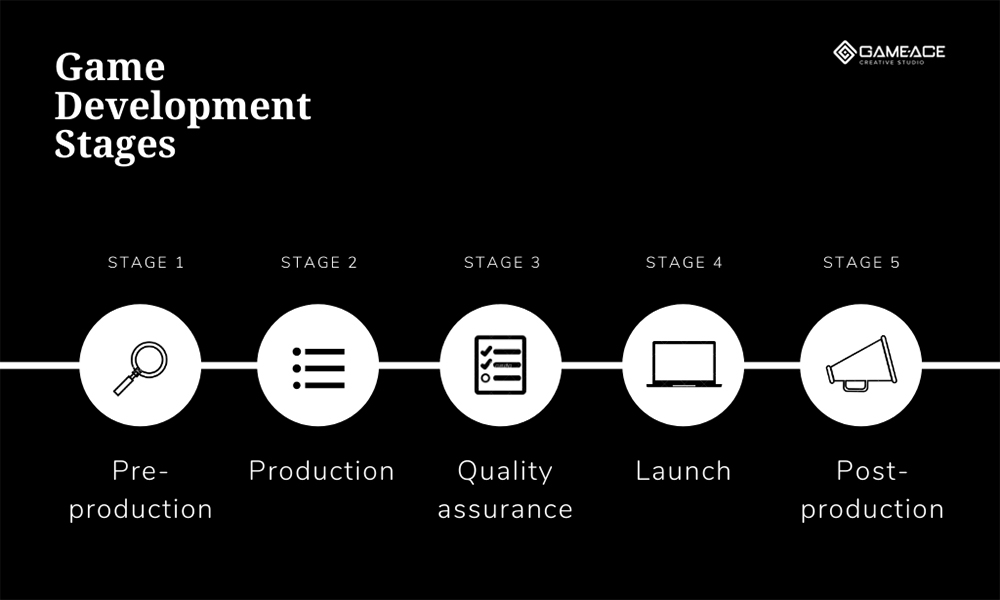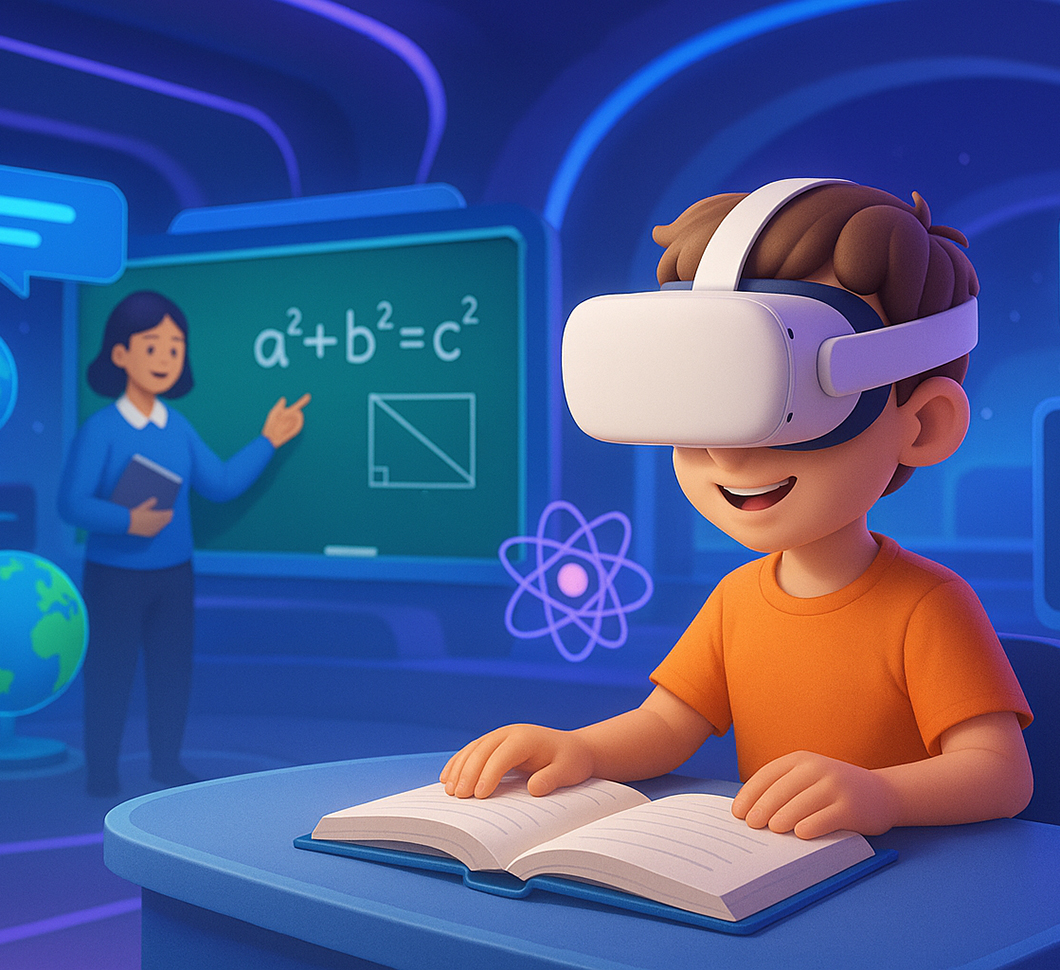In video game development, understanding the intricacies of the game development process is paramount. Professionals committed to the production of video games recognize that game development isn't just a sophisticated endeavor but also an essential one. They can craft breathtaking products that captivate gamers by truly grasping this development process.
However, the challenge arises when not every company effectively structures its game development process. This lack of expertise can lead to disruptions, resulting in organizational chaos and ineffective management.
This underlines the sheer importance of being well-acquainted with the game development pipeline. This pipeline provides a detailed overview of the stages of work essential for a game project. It serves as a roadmap for the stages of game development, ensuring an organized and streamlined workflow. By mastering the stages of the game, companies can avoid pitfalls and navigate the game development landscape more effectively.
In the ensuing sections of this piece, we will expound on the primary game development phases, highlighting their distinct characteristics. Moreover, we aim to equip you with invaluable game development insights and guide you on the journey of securing a dependable collaborator for custom game development. Through a deep appreciation of the game development process, the door to unparalleled success in the gaming world swings open.
Looking for reliable game developers?
What Are the Stages of Game Development?
The game development process, a cornerstone in creating immersive gaming experiences, is meticulously structured into distinct stages. Each stage serves as an indispensable checkpoint that ensures the game is progressing towards its envisioned success. Typically, the game development process comprises five primary game development stages: pre-production, production, quality assurance, launch, and post-production maintenance.
The first stage in the game development process is pre-production. This phase lays the foundation for the entire game development cycle. It involves brainstorming ideas, conceptualizing gameplay mechanics, and drafting preliminary designs. This stage is pivotal as it sets the tone and direction up to the end of the game development cycle, ensuring that all subsequent stages align with the game's core objectives.
Following the blueprint established in the pre-production phase, the production stage of the game development takes the helm. During this stage, the bulk of game development takes place. Artists, programmers, and game designers collaborate to bring the conceptualized ideas to life, transforming them into tangible game elements.
The subsequent game development stage, which is essential in the game development process, is quality assurance. Every game, irrespective of its complexity, must undergo rigorous testing to identify any glitches, bugs, or performance issues. This stage is not just about detecting problems but also about refining gameplay mechanics, enhancing graphics, and ensuring that the overall user experience meets the set standards.
Once the game has been optimized through the quality assurance stage of game development, it proceeds to the much-anticipated launch stage. This is the moment when the game is released to the public, allowing players worldwide to immerse themselves in the newly crafted virtual environment.
However, the game development process doesn't halt after the game's launch. The final stage, post-production maintenance, ensures that the game continues to deliver a seamless experience to its players. Regular updates, additional content, and prompt bug fixes are some of the tasks undertaken during this stage of the game development process.
Ultimately, the game development process, with its multifaceted stages of game development, is an intricate journey that transforms a mere idea into a playable game. The importance of each stage in the game development cannot be understated, as they collectively contribute to the game's success.
From the inception of an idea during the pre-production stage, through the rigorous tests of quality assurance to the continuous enhancements in post-production maintenance, each stage of the game development process plays a crucial role. This systematic process ensures that games are not only enjoyable but also of the highest quality, making the entire game development journey truly rewarding.

Stage 1. Pre-production in Game Development
Video game development is an intricate journey that involves a series of carefully designed steps. The game development process begins with a foundational planning phase, a step that casts a direct influence on all the subsequent cycles in the game development cycle.
Initiating the computer game development process requires in-depth data collection about the envisioned product. This entails understanding the technical nuances that will drive the game's development.
Project managers and product owners assume a pivotal role in these early game development stages. They delineate the game's objectives and crystallize the fundamental concept that serves as its backbone.
In the game development process, understanding the current trends in the gaming industry is indispensable. It's essential to gauge which games or genres are garnering the most attention and generating significant revenue.
A central part of the game development stages is pinpointing the game's intended players. Recognizing their preferences allows developers to refine the game development process, ensuring the game resonates deeply with its audience.
This decision in the game development process is twofold. It's influenced by the platform's popularity among users and the development team's coding expertise and capabilities.
One of the instrumental stages of game development involves strategizing the deployment of human and technical resources. This includes determining the necessary specialists and equipment and charting out a video game development process timeline that ensures smooth project execution.
Video game development owes much of its visual splendor to concept artists. These maestros craft characters, landscapes, props, and a plethora of game assets, lending the game its distinctive visual identity.
The game's revenue model is a vital decision in the game development process. Will the game draw income from advertisements, rely on in-game purchases, or be available for purchase at a set price?
An often underrated yet critical stage in the game development process involves assessing potential challenges. Developers anticipate and strategize against potential pitfalls, ensuring the game development remains unhampered.
As the game development nears completion, charting a marketing plan becomes paramount. The goal is to craft strategies that amplify the game's appeal, ensuring it captivates a vast audience.
Once these meticulous data gathering and strategizing stages of game development are complete, it paves the way for the Game Design Document (GDD). The GDD stands as a cornerstone in the game development process. This document elaborates on intricate game details, encompassing its concept, genre, storyline, type of gameplay, game mechanics, level configurations, and overall environment.
The game development process is an amalgamation of these diverse stages. Each stage plays a quintessential role in molding the final game product. From the nascent planning stages to the meticulous crafting of the GDD, every stage in the game development process ensures that the final game is a paragon of excellence in the dynamic world of video game development.
Video game development is not merely a technical endeavor but an artistic journey that intertwines creativity with intricate mechanics. Each stage of this journey is pivotal, with the game development process weaving a tapestry of art, technology, and business acumen. When we dive deep into this process, we uncover stories, strategies, and the heartbeat of an industry that continues to shape global entertainment landscapes.
The inspiration behind the game. Behind every game lies a spark of inspiration. Whether it's an evocative storyline, a fascinating historical event, or a simple yet compelling mechanic, this initial idea acts as the North Star guiding the entire game development process. This seed of inspiration is nurtured through brainstorming sessions, storyboards, and rough sketches, gradually evolving into a full-fledged game concept.
Feedback loops. Integral to the game development stages is the role of feedback. Developers often release beta versions to a select group, gathering insights to refine gameplay, graphics, and user interface. This iterative process ensures that when the game hits the market, it not only meets but exceeds player expectations.
Collaboration & team dynamics. Video game development isn't a solitary endeavor. It thrives on collaboration. From game designers, programmers, and sound engineers to writers and marketing professionals, each member brings a unique skill set to the table. The confluence of these talents throughout the game development process results in a product that's both technically sound and artistically profound.
Cultural & social relevance. Games often mirror society, reflecting cultural nuances and historical events and sometimes even challenging societal norms. During the game development process, developers have the onus of ensuring their game resonates with diverse audiences. This involves extensive research, cultural consultations, and sometimes even field trips to ensure authenticity.
Emotional engagement. At the core of any memorable game is its ability to evoke emotions. Whether it's the adrenaline rush from a high-octane action sequence or the gentle tug at heartstrings during a poignant moment, the game development process involves crafting experiences. It's about creating moments that stay with players long after they've put down their controllers.
Innovation & tech advancements. The world of video game development is ever-evolving. With the advent of virtual reality, augmented reality, and AI-driven narratives, developers are constantly on their toes. The game development process today is as much about embracing these new technologies as it is about storytelling.
Economic impact. It's undeniable that games have a profound economic impact. Beyond the direct revenues, they influence merchandise, film adaptations, and even tourism for games set in iconic locations. During the game development stages, strategizing for such spin-offs can amplify the game's long-term success and cultural footprint.
To encapsulate, the game development process is a symphony of artistry, technology, and strategic thinking. As consumers, we witness the end product, but behind that polished game lies a journey replete with passion, dedication, and countless hours of hard work. It's a testament to the vibrant spirit of an industry that continues to push boundaries and redefine entertainment.
Stage 2. Production
Delving deep into video game development, one soon discovers that the production stage isn't just the heart but also the backbone of the entire game development process. As the most prolonged and labor-demanding phase within the game development cycle, it's bursting with activities and innovations, further subdivided into smaller yet crucial game development stages.
1. Prototyping: Where Ideas Meet Reality
At the onset of the production stage, we are introduced to the magic of game prototyping. Think of it as the first dress rehearsal before the grand play. It provides a tangible glimpse of the main mechanics envisioned for the game, setting the tone for subsequent stages of game development. To underscore its significance, consider the cautionary tale of the 17th-century Swedish warship Vasa.
Despite the unmatched craftsmanship and vast resources poured into it, Vasa met its watery demise on its maiden voyage, a testament to a lapse in design foresight. This historic misstep underscores the importance of the prototyping phase in the game development process. Without testing, even the most brilliant ideas risk meeting a similar fate.
2. Visual Content Creation: Painting the Game's Universe
Every game is a tapestry of myriad elements — characters that players love or loathe, props that add authenticity, the enchanting environment that immerses players, and other invaluable game assets. The complexity and intricacy of this stage in the game development process vary significantly based on the chosen game format: 2D or 3D.
2D games. Creating a 2D game, while less complex, is no less artistic. The game development process for these visual tales is reminiscent of 3D games, albeit streamlined. Their creation entails sketching, infusing life through colors, and, finally, animating. The inherent simplicity of 2D means that the process is often swift, hinging on the depth of content detailing. However, this doesn't diminish the artistry or the dedication required.
3D games. Embarking on 3D video game development is an adventurous journey through multifaceted stages of game development. The process commences with polygonal modeling, laying down the basic skeletal structure using geometric shapes. As the game development advances, sculpting adds depth and character. Texturing brings forth the skin, giving the game its look and feel. Rigging and animation, on the other hand, breathe life into these models, setting the stage for an immersive experience. The 3D game development process is demanding, necessitating the use of specialized software and tools. Moreover, it calls for a deeper skill set, ensuring that the final product is a testament to professionalism and craftsmanship.
Fundamentally, the production stage in the game development cycle is where visions are molded into reality. It's where the initial sparks from the game development stages get the fuel of dedication and expertise, setting the stage (quite literally) for a masterpiece in the offing. This stage of the game development process is a dance between creativity and technology, and every step, every move counts.
3. Game Level Design Development
Diving deep into the intricate world of game-level design development often feels like one is penning an epic tome's riveting chapters. Just like an author carefully selects each word, phrase, and plot twist, a level designer meticulously constructs every component, ensuring that every inch of the game landscape is purposeful and engaging. When one looks at the myriad stages of game development, it becomes evident that they are more than mere steps; they are pivotal chapters that define the essence of the video game development process.
Now, let's examine this through the lens of the game development process. This process, a complex and dynamic journey, is designed to breathe life into a game's universe. With every progression in the game development cycle, the story unfolds, introducing players to newer challenges, landscapes, and mysteries. The game's narrative evolves, drawing inspiration from each stage, thereby creating a tapestry of experiences that both enchant and engage players.
4. Crafting the Game's Logic: More Than Just Progression
At the heart of the game development cycle lies the stage dedicated to level design. Here, seasoned specialists meticulously sculpt the game's logic, tailoring it to resonate with the genre's unique flavor. Whether it's the pulsating escalation of challenges after completing a gripping linear quest or the allure of navigating an expansive open game world, the stages of game development ensure a dynamic player experience. Every moment and every challenge faced by the player is a testament to the intricate art of level design.
Level design, while integral, is just one of the many layers in the multifaceted world of game development. As one delves deeper into the game development process, the interdependence of each stage becomes palpably evident. From conceptualizing a game's core idea to the final stages of quality assurance, every phase is a critical piece of the giant puzzle. In endless runner game development, level design is particularly crucial as it ensures the procedural generation of obstacles and environments keeps players engaged and the gameplay dynamic.
With its various stages, the game development process ensures that the player is not merely an observer but an active participant, fully immersed and engaged. It's not just about the mechanics or the graphics; it's about crafting an unforgettable journey that stays with the player long after the game has ended.
5. Beyond the Levels: Giving Birth to the Game's Soul
But, the game development doesn't stop at just level progression. The narrative deepens as the level designer weaves diverse elements vital for an immersive video game development process. Central to this is the game economy design — the undercurrent that drives a player's actions and decisions. This aspect of game development is crucial, shaping the rewards, consequences, and overall balance that players navigate.
Equally important are the nuanced plot intricacies, twists, and turns that keep a player's heart racing. With every stage of the game development process, these plots thicken, adding layers of suspense and anticipation. Hints and cues sprinkled generously throughout the game serve as guiding stars. They introduce new mechanics, gently nudging the player along the desired path, ensuring they are never truly lost in the vastness of the game. These hints, subtle yet impactful, are the unsung heroes of game development, making sure the player's journey is both challenging and intuitive.
And as one level seamlessly merges into the next, transitions become pivotal. They are not just about moving from one stage to another but about ensuring continuity in the player's journey. These transitions, meticulously crafted in the game development process, set the tone, pace, and mood, ensuring a cohesive and compelling gaming experience.
Thus, game-level design development, while just one phase in the broader game development cycle, is a world unto itself. It's where the magic of the game truly takes shape, guided by the expertise and creativity of level designers. Through their vision, dedication, and understanding of the game development process, they construct adventures that captivate, challenge, and charm players the world over.
6. Immersive Game Design: The Symphony of Audio
Delving into the immersive game design, the resonance of audio design and voice acting is undeniable. It's not just about mere sounds; it's about orchestrating a symphony that guides, alarms, and engrosses players at every twist and turn. As one moves through the game development stages, it becomes clear that audio is a potent tool in the arsenal of the game development process.
The power of sound. In the meticulous game development process, sound specialists weave intricate soundtracks, each carefully chosen note to enhance the gaming experience. Beyond just the ambient music, sound effects play a pivotal role. They aren't merely noises; they are cues. Whether signaling the euphoria of victory, the heartbreak of defeat, or the lurking dangers in the shadows, every effect is a beacon guiding the player through the stages of game development.
Nature's symphony. Authenticity is the name of the game. Hence, natural sounds like the rhythmic footfalls of a character, the echoing boom of an explosion, the gentle whisper of the wind, or the tranquil lapping of water are intricately integrated. These sounds ground the player, merging the lines between the virtual and the real, making the video game development process genuinely immersive.
Giving voice to the virtual. Music and sound effects are just half the auditory equation. Enter voice acting. From poignant monologues to vibrant dialogues, every uttered word breathes life into virtual beings. Skilled voice actors lend their talents, ensuring each line resonates with emotions. This meticulous process involves recording and seamlessly importing these lines into the gaming software, a pivotal step in the game development process.
7. Intricacies of Coding
Switching gears, let's talk about the skeleton and heart of the game: coding. As the game development cycle advances, there's a palpable shift from the abstract to the concrete. The stage is set, and it's time to infuse life.
Crafting the digital tapestry. By the time coding begins, developers are handed a treasure trove of game elements. Now, they embark on the herculean task of weaving together these elements. Writing thousands of lines of code might seem tedious, but it's akin to crafting a digital tapestry that will encapsulate players in the game's universe.
Engines of creation. Using game engines simplifies this task, yet it's anything but easy. Ensuring the seamless functioning of the game requires precision. Imagine a puzzle where each piece, though unique, fits perfectly. That's the essence of the game development cycle. Every stage, every decision, and every line of code must align. The aim? It is an error-free game that doesn't just function but thrills.
A balancing act. As the stages of game development progress, developers are often faced with challenges. Incorporating immersive mechanics without contradictions, ensuring the game functions without hiccups, and optimizing for the best user experience becomes paramount. It's a balancing act, one that forms the cornerstone of the game development process.
So, game development is a dance between sound and code. As each stage of the game development process unfolds, the masterpiece takes shape, promising an experience unparalleled. Every step, every sound, and every line of code is a testament to the magic of the game development cycle, a cycle that never truly ends but evolves.
Don’t have much time for independent development?
Check out our game development services!
Stage 3. Quality assurance
Ensuring a smooth and immersive player experience stands paramount. At the core of the game development process is a pivotal step: rigorous testing. This isn't just about nitpicking; it's a comprehensive sweep to ensure the gamer's journey is seamless, absorbing, and uninterrupted. A single glitch or misstep can quickly take a player out of the game's universe, tarnishing the hours of hard work put into the game development stages. Given the gravity of this stage, it's no wonder that the game development cycle invests so much into refining this process.
Understand this: the stages of game development are akin to the chapters of a gripping novel, each having its own essence, each requiring its unique touch. And like a final draft review before publishing a book, games, too, must undergo rigorous scrutiny. This ensures the narrative flows, the challenges captivate, and the adventures remain unforgettable.
The video game development process categorizes these tests into functional and non-functional types.
Functional game testing types:
- Interoperability game testing. How well does the game play across different platforms and systems?
- Regression game testing. Does any new feature or adjustment disrupt existing functions?
- Smoke testing. A preliminary test to catch the glaring issues before delving deeper.
- Localization testing. Ensuring the game resonates culturally and linguistically with different demographics.
- Security access control game testing. Keeping unauthorized users and potential hackers at bay.
- User acceptance testing. A litmus test to gauge if the game aligns with the expectations and requirements of the target audience.
Non-functional game testing types:
- Performance testing. Does the game run smoothly, providing an optimal gameplay experience?
- Load game testing. How does the game perform under the burden of multiple users or operations?
- Stress testing. Pushing the game to its limits to see at what point it breaks or crashes.
- Stability testing. Checking the game's resilience over prolonged periods of use.
- Volume game testing. How does it fare when bombarded with extensive data?
- Usability testing. Is the game intuitive and user-friendly?
- Compliance game testing. Ensuring the game aligns with industry standards and regulations.
- Installation testing. Does the game install without hitches across platforms?
- Configuration game testing. Verifying the game's performance across different configurations.
- Disaster recovery testing. Ascertaining the game's ability to recover from crashes or malfunctions.
In the game development cycle, each of these testing phases ensures that when a player dives into the game, they are greeted with an experience that's not just bug-free but also deeply engrossing. The stages of game development, especially the testing stage, are a testament to the industry's commitment to delivering top-notch entertainment.
Diving into the vast and intricate world of game development, it's evident that testing is an integral component of the game development process. Indeed, to truly grasp the essence of creating a game that resonates with players, one must delve deeper into the myriad types of game testing, each with its distinct attributes and nuances. By doing so, the game development cycle is significantly enhanced, optimizing the player's experience from start to finish.
The game development stages involve a series of meticulous processes, each one building upon the other. At the forefront of these stages of game development is the testing phase, which scrutinizes every aspect of the game, ensuring it operates without a hitch. For those keen on understanding the inner workings of the game development process, there are numerous resources available to learn more about the main types of game testing, their specific use cases and valuable game testing tips tailored to enhance the process.
Each type of game testing focuses on a particular facet of the game. For instance, while some are dedicated to assessing the game's functionality, ensuring all features and mechanics work as intended, others might be focused on gauging the game's performance across different devices, ensuring compatibility and smooth gameplay. This rigorous process is instrumental in identifying any hiccups in the game development process.
Stage 4. The Grand Launch
Every stage in the game development process plays a critical role, but few are as exhilarating as the launch phase. As the curtain rises on this penultimate stage of game development, there's an air of anticipation and excitement. However, those well-versed in the video game development process know this isn't the grand finale. When the game first meets the world, it might still have rough edges.
Even the most meticulously crafted games may harbor unforeseen issues. As players immerse themselves in this new universe, the game development team works tirelessly in the background, refining and enhancing the gameplay experience. Simultaneously, the initial wave of feedback from genuine players begins to roll in, providing developers with a treasure trove of insights to fine-tune their masterpieces.
Stage 5. The Art of Refinement
Venturing into the post-production phase of the game development cycle is akin to a ship embarking on uncharted waters. Now that the game has been launched and players from all corners are diving in, the real work begins. The stages of game development do not merely conclude upon release; they evolve.
In the post-production stage of game development, the focus sharpens on stability and performance. With the game out in the wild, a magnifying glass is placed on its every nook and cranny. As platforms continually evolve and undergo updates, game studios must be nimble, ensuring their games remain compatible and optimized. Regular updates become the heartbeat of a thriving game, addressing technical necessities while breathing fresh life into the gameplay experience.
Furthermore, as part of the ongoing game development process, developers tap into the ever-evolving desires of their player base. They are not just reactive but proactive. By introducing captivating new in-game content, mechanics, and features, they keep the game's community-engaged, invested, and always on their toes, eager for what's next. This stage also emphasizes the critical role of quality assurance. With each update and modification, rigorous testing ensures that the new versions introduce exciting content and maintain the game's integrity and quality.
Therefore, the process of creating a game is a journey filled with numerous stages, each more vital than the last. The game development cycle is an intricate dance of creation, feedback, refinement, and evolution. From the initial ideation to the continuous nurturing post-launch, each stage of game development is a testament to the dedication, passion, and expertise of the teams behind our favorite digital adventures.
Game Development Tips to Bring a Project to Perfection
Every stage of game development holds unique importance in the intricate dance of the game development process. As professionals traverse through various game development stages, they gather a plethora of insights from the video game development process. Here are some of the invaluable lessons we've unearthed from our journey through the game development cycle:
2. Dive deep into references. One cannot emphasize enough the criticality of this stage in the game development process. Immersing oneself in diverse references, analyzing competitors, and extracting the best features ensures that your game stands tall during every stage of game development.
3. Craft a unique identity. While drawing inspiration is pivotal in the game development process, injecting uniqueness into your game is what sets it apart. The stages of game development should always include brainstorming, identifying gaps in the market, and innovating to leave an indelible mark on players.
4. Harness the power of game engines. Engines like Unity and Unreal Engine are not just tools; they are partners in the game development cycle. Designed explicitly for the multifaceted video game development process, they come equipped with tools and insights, aiding in almost every stage of game development.
5. Embrace collaboration. Recognizing the complexity of the game development cycle, it's vital to remember that the process is collaborative. The game development process often benefits from a fresh perspective. So, when needed, trust in outsourcing parts of the process to experts in the field.
Achieve a Flawless Product with Game Development Services
As we have demonstrated, creating a game requires many steps, and each of them can also be divided into different stages of game development. Not all companies are up to the task of full-cycle development, and some just need a helping hand in a critical development phase.
Game-Ace is a custom game development company with a large team of experts ready to assist with various processes – from concept art to coding, product testing, and maintenance. Our portfolio includes dozens of commercially successful games on many different platforms: mobile devices, PCs, consoles, and VR headsets. We also handle roblox game development for branded worlds, simulations, and live-ops.
Are you in need of stunning and stress-free game development? We would be happy to assist you and get your project done! Contact us at any appropriate time, and we’ll consult you regarding any details or questions about your product.
 How to Create Crypto Casino Games the Right Way
How to Create Crypto Casino Games the Right Way  AI Recruitment Games: From Real-Time Assessments to Better Hiring Outcomes
AI Recruitment Games: From Real-Time Assessments to Better Hiring Outcomes  Games for Business: Proven Strategies for Engagement and Growth
Games for Business: Proven Strategies for Engagement and Growth  How to Design Learning Games for Kids That Teach Real-World Skills
How to Design Learning Games for Kids That Teach Real-World Skills  Level Up Learning: How Game-Based Learning Drives Real Results
Level Up Learning: How Game-Based Learning Drives Real Results 


































